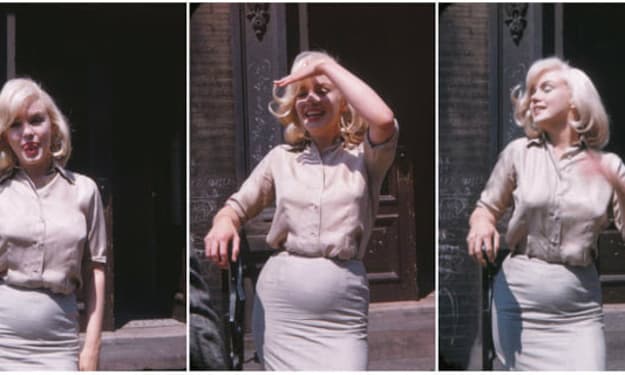The Auschwitz Massacre
HOW PEOPLE WERE TORTURED AT AUSCHWITZ

Zsuzsa Diamanstein, a Romanian of Hungarian-Jewish origin, talks about the nightmare at Auschwitz and her meeting with the dreaded Dr. Mengele, nicknamed the 'Angel of Death' for his sadistic experiments on detainees.
In 1944, when she was brought to Auschwitz with other prisoners, Zsuzsa Diamanstein first met Josef Mengele, but at the time she did not know the dreaded fame that surrounded him. A few months later, when Germany was about to be defeated in World War II, Mengele entered the barracks where Zsuzsa, frightened, hugged another girl.
"He asked us if we knew who he was. By then, we had already found out. He examined us with such intensity and arrogance, then he left. I will never forget this moment," the Romanian confesses. She says she can't get rid of this memory, just as she can't forget the blue number tattooed on the doctor's hand.
Of the many dark events of those days, Zsuzsa claims that the most terrible are those related to the separation from his mother, Paula. For a time, the two women, mother and daughter, were kept together in a shack. They were separated after Zsuzsa was chosen to work in a factory.
The last time she saw his mother from a distance, in the camp. Paula was to be taken to the gas chamber, as was Zsuzsa's father. The Romanian woman says that she still feels haunted by the sweet smell of burnt meat.
Although she was hard tried, Zsuzsa, at the age of 88, is full of humor. Stick your tongue out at the photographer and giggle. "I like to joke," adds the old woman.
Today, Zsuzsa lives in a modest apartment in Targu-Mures. Hospitable, she served reporters with cakes and coffee. Later, when they were ready to leave, he packed some goodies. In the camp, she had nothing, and now she shares from the little she has.
Every year, January 27 is International Holocaust Remembrance Day.
The total number of Romanian and Ukrainian Jews who perished in the territories under Romanian administration is between 280,000 and 380,000, according to the Final Report of the International Commission for the Study of the Holocaust in Romania. Two "death trains" died in suffocation or thirst, in which Jews were embarked and began their painful journey to Muntenia, on June 30, 1941, crossing several stations in Moldova. The conditions under which the transport took place are difficult to describe: they were hermetically sealed and guarded by German troops S.S. No one was allowed to approach the trains when they reached the stations, give them water or open them for air. Because of the smell of corpses and the misery resulting from the inhuman conditions they were subjected to, about 2,700 Jews died of suffocation or thirst, and others lost their minds. Some of them were saved in the Roman train station by the energetic intervention of the president of the Roman Red Cross, Viorica Agarici.
According to a declassified document, the prefect of Iasi, Captaru, reported on July 1, 1941 to the Minister of Internal Affairs:
"The transport of evacuated Jews, who left on June 30 at 4 o'clock, from Iasi, is in Tg. Beautiful, from where you will leave in 1-2 hours to Calarasi-Ialomita. Measures have been taken to sort the wagons of the dead and to supply food and water to those in the wagons. "
The dead from Calarasi, exhumed and taken to Israel The Pogrom from Iasi, says the historian Adrian Cioflanca, was the biggest massacre in modern Romania. "The tragedy in Iasi brutally changed the demographic, social, economic and cultural profile of Iasi, a city where Jews used to represent half of the population." Two trains left Iasi Station. One arrived at Iloaia Bridge after nine hours, and the second in Calarasi, after nine days of infernal travel. "The train should have arrived in Targu Frumos, but the German unit there did not agree, as there was a danger of a new pogrom. On the other hand, the area was very close to the front line and the chaos would have extended. That's how the train arrived in Calarasi ". The Jews who arrived at Iloaiei Bridge were accommodated in the community, and those from Calarasi stayed in the camp. The dead on the train to Baragan were buried in mass graves, and in the 1970s, they were exhumed and buried in Israel. There are no more plaques in the cemetery, nothing reminiscent of these horrors. Everything was devastated ", says the historian.
Held in barracks for several months, under guard. Of the 5,000 boarded by train, only 1,011 arrived in Calarasi, after 9 days of infernal travel. Nicolae Tiripan, historian, head of the Calarasi Archives, following the research done on this subject, says that people were held only a few months in Calarasi. Then, for no reason, they were returned to Iasi.
"After arriving in Calarasi, they were kept in barracks for a few months, under guard, in the former Enterprise on June 11, in the school premises in Magureni, at the Regiment and in 2 synagogues in the city. The bravest of the locals, at their mercy, went and threw fruit with the slingshot over the fence, so that they would not starve. They were not taken out of town. Many of them died because they got sick on the train ", says Nicolae Tiripan. The historian also says that when the train arrived in Calaraşi, the local authorities welcomed him nicely, as much as possible in those conditions, and even gave them hot tea. Then, on arrival, 25 bodies were disembarked from the death train. After a few months, without any explanation, the people were put on the train again and sent to Iasi.
The Testimony of One of the Survivors
"Those who managed to survive this ordeal recounted the terrible moments they went through. Here is what Sulim Zingher was saying during the Iasi pogrom trial: Iasi Police. This agent, together with a patrol of about 7-8 Romanian border guards, under the command of a lieutenant, accompanied by one or two public guards, ordered us all to lie down on foot in the yard of the building, first hitting us with some sticks, then with the gun bed. (…) At the Questura I was hit in the head by the clubs of those who were at the gate, and in the evening I was led with the other Jews to the station, where I was boarded in the death-wagons. The journey on the train I was on lasted for 8 days and 9 nights to the destination, the city of Calarasi. In the Romanian station I saw written on the wagons: “These are the criminals who fired in the Romanian army. (…). Of all the 7 members of my family raised from the house, only I came back to life ".
About the Creator
Maria Ostasevici
Communication and public relations student, Moldova
Instagram profile: maria.ostasevici;
mother of two awesome Dobermans.
BEST VERSION OF YOURSELF- THAT'S TRULY EPIC






Comments
There are no comments for this story
Be the first to respond and start the conversation.